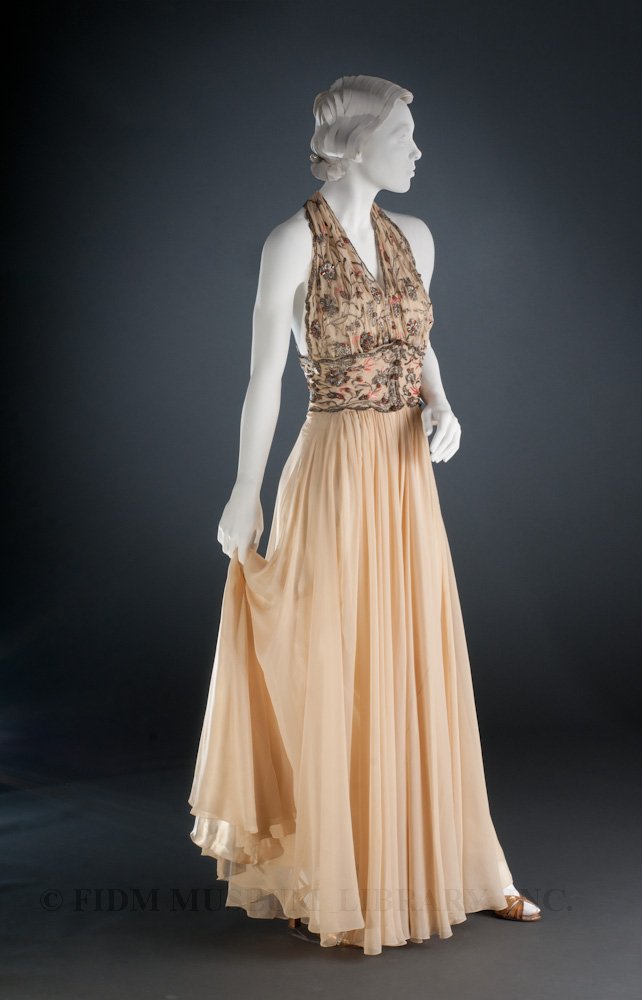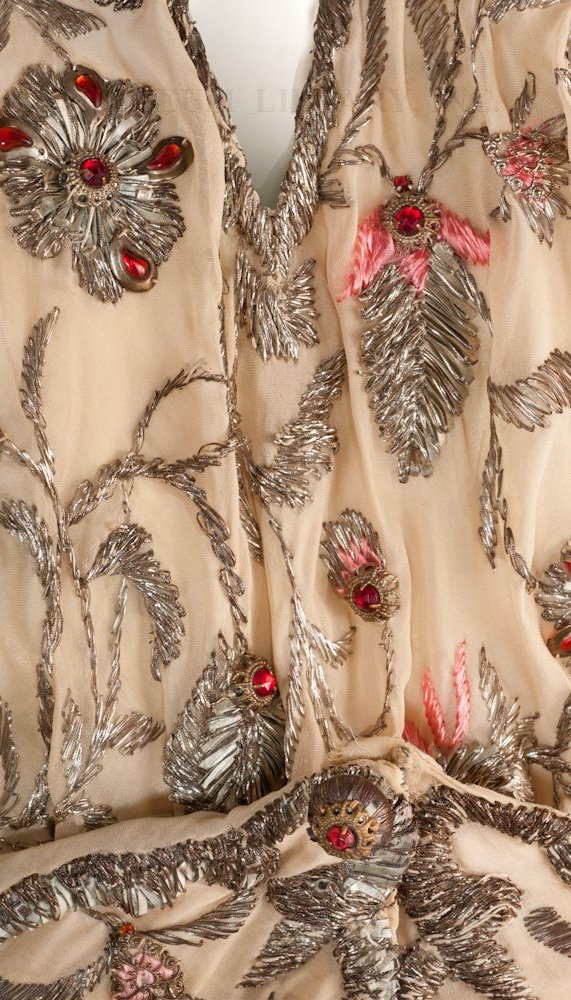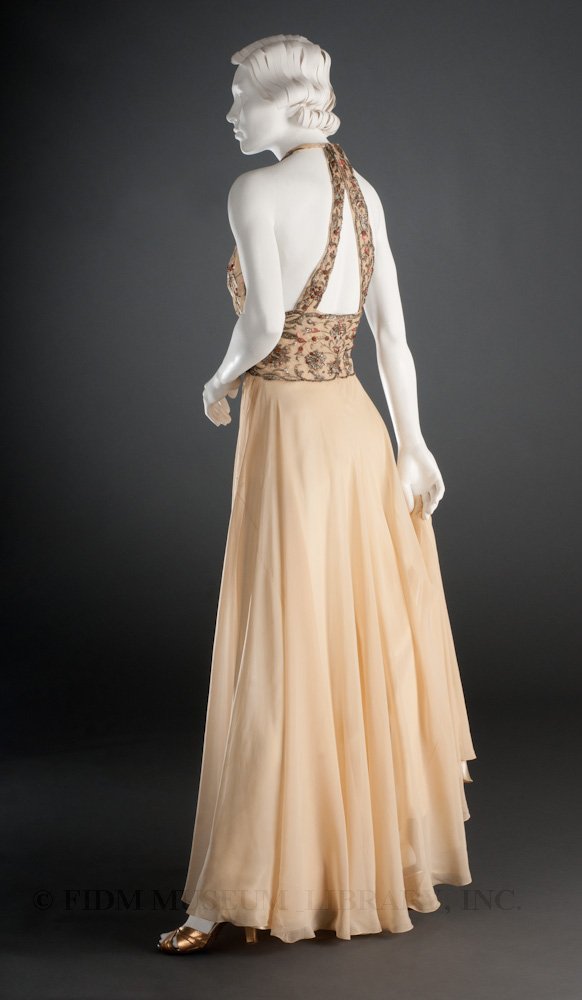 Evening gown
Evening gown
Madeleine Vionnet
c. 1936-1938
Museum Purchase, Funds provided by Mrs. Tonian Hohberg
2008.5.50AB
The first time I saw this Madeleine Vionnet halter evening gown, I had a hard time reconciling it with my knowledge of Vionnet's work. When I think of Vionnet, ingenious construction techniques are first in my mind, not applied decoration. Tucks, pleats, twists, innovative seaming and bias cut fabrics, often applied to gossamer weight chiffon, are both the technical foundations of her work and frequently the sole decorative elements. Don't get me wrong–I like a shiny sequin or glittery rhinestone as much as the next person. But I've always appreciated the deceptive simplicity of Vionnet's work and the way in which her unornamented designs force you to focus on the basic elements of her work: textile and construction.
Vionnet's primary concern was the form of a garment and how the garment related to the body. Working on her legendary wooden mannequin, Vionnet draped, cut and slashed plain muslin toiles until a satisfactory design emerged. A suitable textile was chosen only after the design was complete. Vionnet herself tended towards neutrals, as she acknowledged in a 1937 interview: "I like black and white. They are pure color. Next to them, I like natural colors like the blue and green of eyes and red of lips."1 In lieu of color, Vionnet often created textural contrasts by using different sides of the same fabric, or by pairing different textures in the same garment. If a patterned or brightly colored textile appeared in a Vionnet design, it was probably selected by Marcelle Chaumont, the premiѐre of Vionnet's atelier. Chaumont's color sense mediated Vionnet's taste for neutrals.
Though Vionnet may have been most concerned with form, many of her garments feature sophisticated, carefully placed embellishment. Aware that her creative strength was in dressmaking, not surface design, Vionnet hired designers to create patterns for textile and surface decoration. From 1919 to 1925, she worked closely with Thayaht. In addition to creating surface designs for Vionnet, he illustrated her garments for the French fashion journal La Gazette du Bon Ton. In 1918, Vionnet hired Marie-Louise Favot. A dressmaker and trained artist, Favot (called Yo because Vionnet already employed a Marie-Louise) designed all of Vionnet's embroidery motifs. Though the motifs were designed in-house, the actual work was contracted out to Michonet, a Parisian embroidery firm founded in 1858. Because so many of Vionnet's designs were cut on the bias, innovative techniques were used to apply surface decoration. For example, embroidery stitches were angled to follow the grain of the bias-cut fabric so as not to interfere with the drape.
Yo worked particularly closely with one Michonet embroiderer, Albert Lesage. (Hopefully this name rings a bell!) Lesage purchased Michonet in 1922, changing the name of the firm to Lesage. Soon afterwards, Albert Lesage and Yo were married. Their son, Francois Lesage, is the current owner of Lesage. Today, the firm produces both private commissions and designs for ready-to-wear and haute couture
Given what we know about Vionnet's atelier, Yo probably designed the bodice embroidery, which was then executed by Lesage's embroiders. The chiffon foundation is embroidered with silk and metallic thread in a pattern of twining vines and flowers, accented with rhinestones and glass cabochons. Looking beyond the lovely surface embellishment, Vionnet's construction techniques are evident in the unstructured bodice. Instead of using bust darts for shaping, the fabric is gathered and twisted around the neck; this technique pulls the fabric close to the body, ensuring a close fit without the use of darts. The wearer's back is left nearly bare, accented by embroidered straps. A cummerbund wraps around the waist, compressing the excess chiffon into soft gathers.
1 Kirke, Betty. Madeleine Vionnet. San Francisco: Chronicle Books, 1989: 175.



